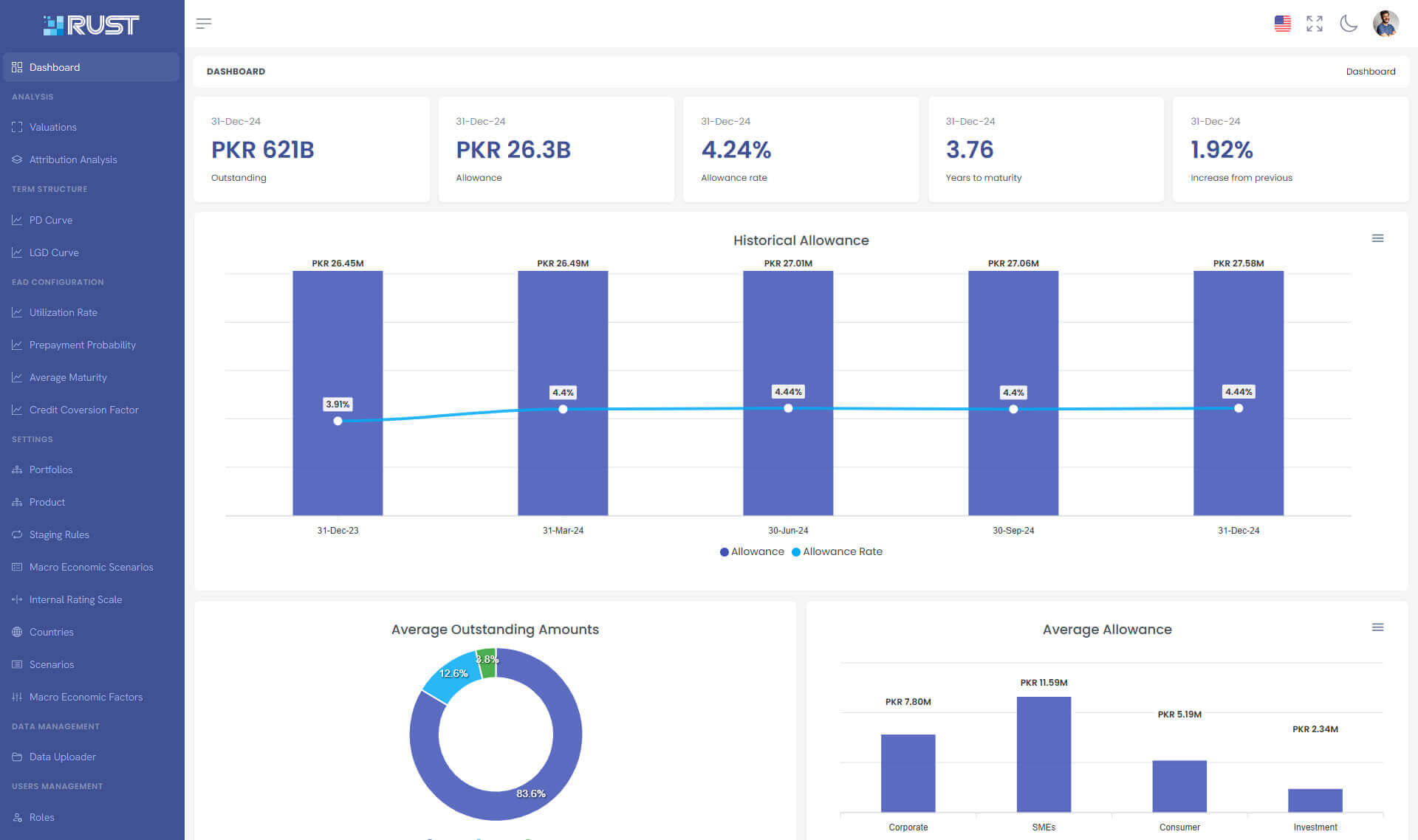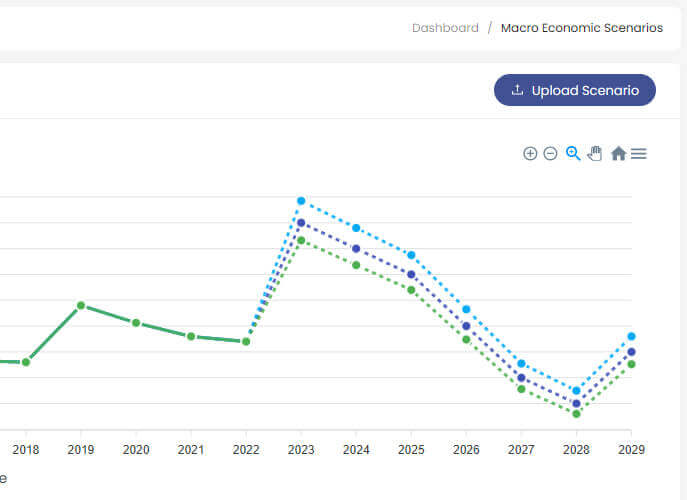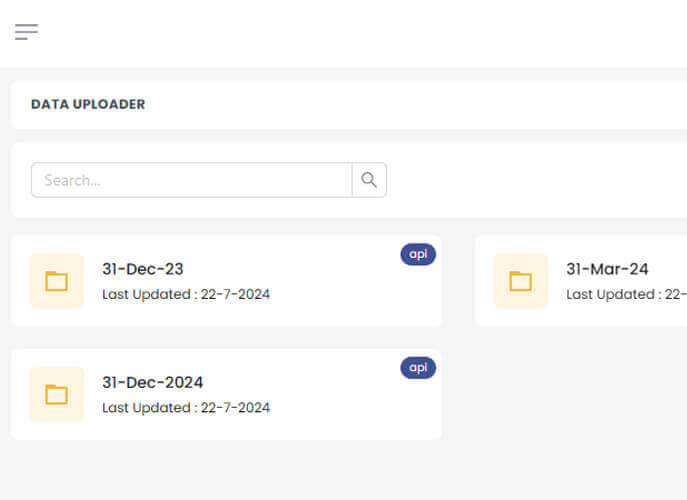Rust IFRS 9 Software is the ultimate solution for banks and financial institutions, automating and simplifying expected credit loss (ECL) modeling. Ensure accuracy, security, and transparency across all your financial instruments.




Rust IFRS 9 Software supports the complete lifecycle of financial instruments, from initial recognition to the final reporting date.
It facilitates developing and managing full-term structures for PD, LGD, and EAD curves, ensuring accurate IFRS 9 classification and measurement.
Including macroeconomic factors and multiple scenario analyses enhances the precision of credit loss estimations.

Rust IFRS 9 software stands out as a highly transparent model, providing complete visibility into its calculations to ensure strict adherence to the requirements of IFRS 9.
This level of transparency is critical for financial institutions, empowering them to monitor and accurately report their financial standing meticulously.
It is precious when dealing with the complexities of financial assets and liabilities, allowing for a more comprehensive and precise financial management approach.

Rust IFRS 9 provides the ability to thoroughly compare and analyze the initial and final expected credit loss (ECL)
values, enabling a comprehensive assessment of the fluctuations in credit losses over time.
A comprehensive and meticulous analysis guarantees that the financial statements and reporting procedures are built upon precise and dependable data.
This is particularly crucial for obtaining a deep understanding of the fluctuations in your financial assets and liabilities over some time.

Whether your institution prefers an on-cloud or on-prem solution, Rust IFRS 9 adapts to your IT infrastructure.
This seamless integration minimizes disruptions and ensures a smooth transition, whether dealing with legacy systems or advanced platforms.
The flexibility of deployment options allows institutions to meet diverse operational preferences and security requirements.

Rust IFRS 9 software provides comprehensive protection for your data through robust security features. These include role-based access control, ensuring only authorized individuals can view or modify sensitive financial information.
In addition, implementing multi-factor authentication adds an extra layer of security by requiring users to provide multiple forms of verification before accessing the data.
The measures ensure compliance with IFRS 9 standards and address broader industry security requirements by mitigating the risks associated with unauthorized access. Rust IFRS 9 offers a strong defense against potential security threats.

Rust IFRS 9 offers more than just software solutions. In addition to providing robust software, it also delivers comprehensive training and support to ensure that your team understands every crucial aspect of IFRS 9.
This includes guidance on first-time adoption and intricate expected credit loss (ECL) calculations.
This level of support proves to be indispensable for banks and financial institutions striving to uphold a competitive advantage in credit risk modeling and compliance.
IFRS 9 is a global accounting standard that replaced the older IAS 39 for financial instruments. It provides a comprehensive framework for classifying, measuring, and recognizing financial assets and liabilities. Saudi Arabia has adopted IFRS 9, aligning its financial reporting with international best practices. Prima Consulting's deep expertise in IFRS 9 can help your organization navigate the complexities of this standard and achieve compliance while optimizing financial performance.
Saudi Arabia has fully adopted the International Financial Reporting Standards (IFRS). Companies operating in the Kingdom must prepare their financial statements per IFRS. Prima Consulting offers tailored solutions to help businesses in Saudi Arabia successfully implement and comply with IFRS 9.
Saudi Arabia primarily uses accounting standards issued by the Saudi Organization for Certified Public Accountants (SOCPA), which are fully aligned with IFRS. However, there are specific requirements related to local factors like Zakat that companies need to consider. Prima Consulting's in-depth knowledge of IFRS and local accounting standards ensures that our clients receive comprehensive and accurate financial advice.
IFRS 9 categorizes financial instruments into three primary classifications: financial assets at amortized cost, financial assets at fair value through other comprehensive income (FVOCI), and financial assets at fair value through profit or loss (FVTPL). Whether an investment is classified as equity or liability depends on the specific characteristics of the instrument and the entity's business model. Prima Consulting can assist in determining the correct classification of your financial instruments under IFRS 9.
IFRS 9 introduces a new impairment model, the Expected Credit Loss (ECL) model, replacing the incurred loss model under IAS 39. This model requires entities to estimate credit losses over the entire life of a financial asset, providing a more forward-looking approach to credit risk management. Prima Consulting can help you implement the ECL model effectively and mitigate credit risks.
Yes, audits are mandatory for certain companies in Saudi Arabia, including private limited liability companies, partnerships, and joint-stock companies. The Saudi Organization for Certified Public Accountants (SOCPA) oversees the auditing profession and ensures compliance with professional standards. Prima Consulting can provide audit support and assurance services to meet your regulatory requirements.
IFRS 9 is mandatory for annual periods beginning on or after 1 January 2018. Earlier adoption was permitted. Given its significant impact on financial reporting, it's crucial to thoroughly understand IFRS 9 to ensure compliance and accurate financial statement presentation. Prima Consulting offers comprehensive IFRS 9 implementation support.
IFRS 9 is a fundamental standard that governs the classification, measurement, and impairment of financial assets and liabilities. It aims to improve the relevance and reliability of financial information by introducing the ECL model and other enhancements. Prima Consulting can help you understand the critical principles of IFRS 9 and its implications for your business.
Your Trusted Partner for Financial & Risk Management Solutions in the MENA Region